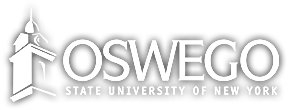“We cannot hope to create a sustainable culture with any but sustainable souls.”
-Derrick Jensen
Hi Readers,
Recently I had the pleasure of talking the school’s sustainability department, and I learned a lot about their role on campus, and why it is important to know what they do, as well as a few tidbits of information on the new science building and how students (just like you!) can contribute and get involved with these really cool guys on campus.
Q: First off, a little background info for the readers. Who/what all does the sustainability department comprise?
A: The sustainability department basically is comprised of 4 people.
- Jamie Adams – Sustainability Programs Coordinator
- Mike Lotito – Sustainability Engineering Coordinator
- Jason MacLeod – Graduate Assistant
- Stephanie Chytalo – Intern
———————————————-
Q: What exactly is the scope of your organization’s activities?
A: The sustainability office is responsible for facilitating the implementation of academic and engineering sustainability-related initiatives throughout the SUNY Oswego Campus. Additionally, the sustainability department is responsible for calculating greenhouse gas emissions, compiling the annual campus carbon footprint, and completing all mandatory reporting (e.g., Executive Order 4 & 88).
———————————————-
Q: What were the things your department was responsible for in the design and implementation of the Shineman Center?
A: Currently, the way the sustainability department has been structured by the college, Mike Lotito works both for sustainability and the facilities planning and design team. Therefore, we cannot solely claim responsibility for any of the sustainable features of the building, because we have always collaborated with the larger planning, design, and construction team. So, we had say in many of sustainability features, such as, the energy dashboard system, solar array, and geothermal system just to name a few. However, we were also a part of the larger discussion of heating and ventilation systems, lighting, plumbing, and controls which are not commonly thought of as sustainable features, but do contribute substantially to why the building is efficient.
———————————————-
Q: How much of Shineman’s energy is produced through renewable means (i.e. wind, solar, geothermal, etc.) and can you provide a breakdown of how much each source contributes?
A: This is a tough question, and honestly the building is so new that we haven’t received enough data to provide a comprehensive breakdown of individual energy contributions. Typically, those types of statistics cannot be accurately projected until there has been at least one complete year of post-occupancy commissioning. However, I can accurately give you the specifications of the systems. We have installed a 36 kW solar array on the roof, and the geothermal system is comprised of 240 wells which are all 499 feet deep. The plan is to use the geothermal system to both supplement heating and cooling of the building throughout the year. Furthermore, there are two experimental areas of green roof installed on the east connector and south side of the building totally more than 2,000 sq. ft. In the future, we are hoping to have a few electric vehicle charging stations and a small vertical axis wind turbine installed as well.
Since I can’t provide you with the exact data you are requesting, here are some additional statistics we have estimated in contrast to the previously occupied buildings.
- Shineman is designed as a LEED Gold Building
- Estimated to use 40% of the energy required to operate the old Piez and existing Snygg building, while Shineman is actually larger than the two buildings combined.
- Designed to generate 38% less waste water than Piez and Snygg combined.
- Designed to use 64% of the natural gas and 23% less electricity than the existing science buildings.
- The geothermal system utilizes approximately 44 miles of piping.
———————————————-
Q: What is/are the best way(s) for students to get involved with the sustainability department?
A: The best way to get involved is to visit our website, do-one-thing a day, and make suggestions for improving campus-wide sustainability awareness. Additionally, if you are a student that wants to contribute for sustainability initiatives on campus, you can get credit for doing so by enrolling in SUS101-ECO Reps.
Here is more information on becoming an Eco Rep at SUNY Oswego.
Or, visit our website:
———————————————-
So, there you have it. If you ever have any questions for them concerning projects on campus or the like, you can also give the department a visit over in 165 Wilber Hall (located within the facilities design and construction office). They’re all very friendly people and are always happy to have a chat with a student!



Oh wow I love the sustainability people! They are awesome!